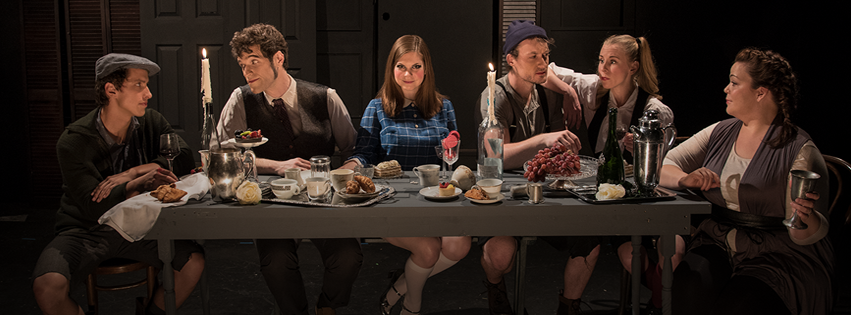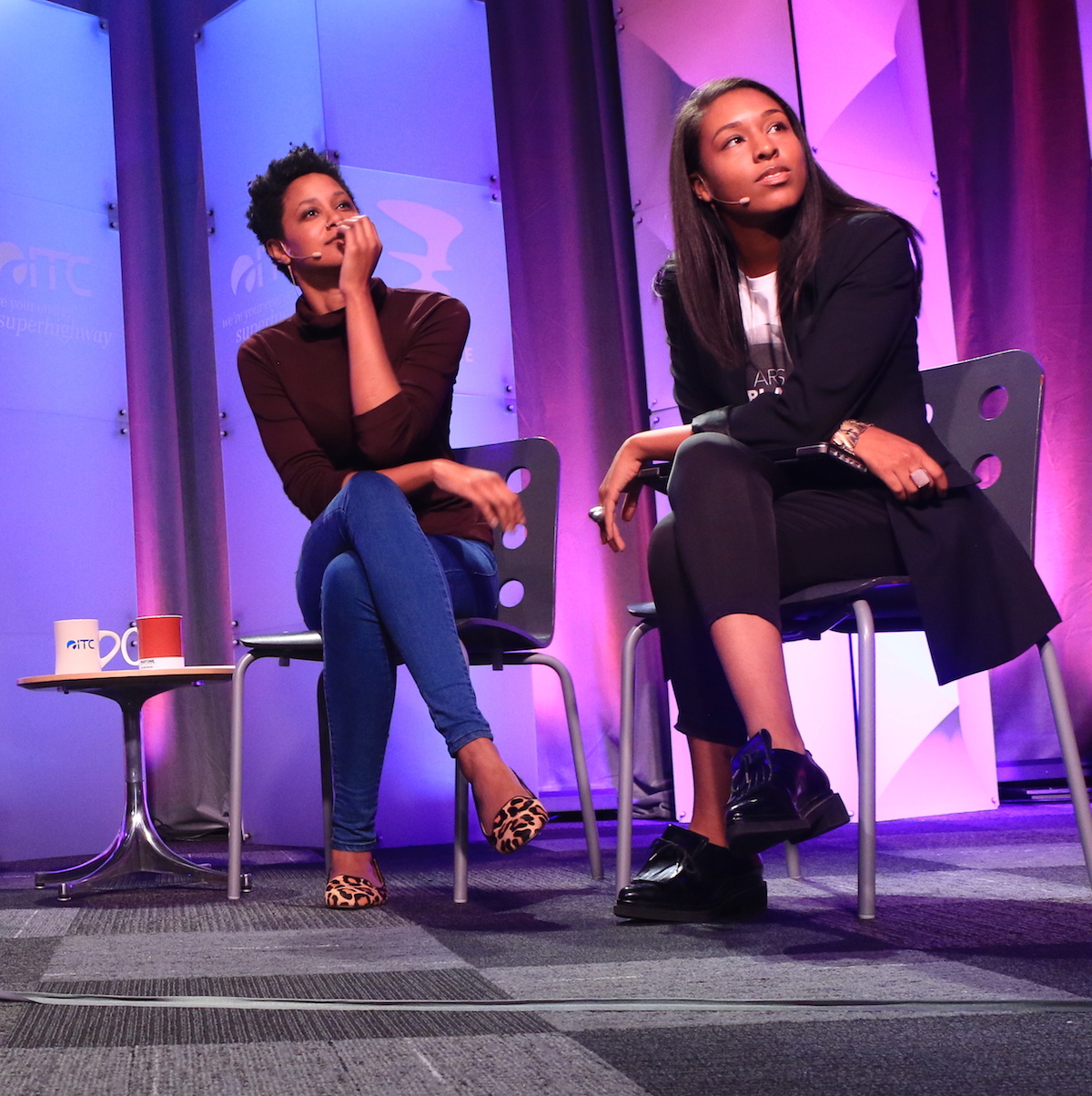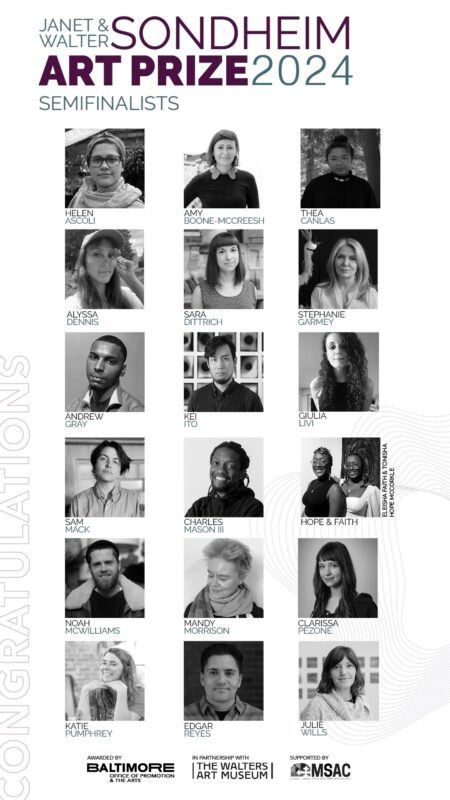The Birth of ARTS.BLACK & its Place in Art Criticism: An Interview with Editors Jessica Lynne & Taylor Renee Aldridge by Kelly Louise Barton
Founded with the belief that art criticism should be “an accessible dialogue,” ARTS. BLACK is a journal dedicated to providing Black perspectives in the contemporary art world. Led by editors Taylor Renee and Jessica Lynne, ARTS.BLACK was a direct result of a simple question posed to Facebook: “Where are all the Black art critics?”
Asked with the intention of simply finding critics to follow, they soon found that even their attempt to crowdsource these voices yeiled few results. This question brought to light to both Taylor and Jessica, that not only were they not alone in having difficulty finding these voices they wanted to read, but that they also had an interest in creating a platform to make tracking them down a little easier.
Pulling from their ties to both the publishing and art worlds, Renee and Lynne impressively collaborate remotely from Detroit and NYC, respectively, and have been constantly striving to provide discourse in the art world as they “question, celebrate and talk back to the global world of contemporary art.” They managed to sneak a few moments away to answer a few questions about their vision, their work, and how they manage to maintain a healthy balance between the two.
How did you both get your start in writing and publishing?
Jessica: I studied creative writing in undergrad and had some phenomenal professors push and challenge me as a writer. I’ve always been interested in the craft of storytelling. During my final year at NYU, I saw a posting asking for culture writers for a new Black women’s blog, Zora Magazine. I responded to the post and quickly formed a tight friendship with the founder, Ope Bukola. Shortly after my first few assignments, Ope asked if I would be interested in coming on board as a co-editor. Zora remained active for five years, and in its final form, was a quarterly digital magazine in which we published longform essays. All of this laid so much ground work for my role at ARTS.BLACK.
Taylor: I was doing a lot of writing for academic purposes, and blogging here and there, but it took time for me to find the confidence to begin publishing my work. I never thought of myself as a writer. It wasn’t until I saw Jessica’s work with Zora Magazine and other alternative publications that I found the courage to publish on my own and create publishing opportunities for others. My early experiences with publishing are all almost exclusively prompted by the encouragement and inspiration I received from Jessica.

Outside of writing, what is your relationship with art and the art world?
J: I’m also an arts administrator having spent all of my professional career at non-profits. There are days when it all stresses me out because one is really close to the politics of the “art world” when you work as an administrator. But, I do think this type of work forces me to ask thoughtful questions as a critic, and more importantly, as someone who cares deeply about the culture.
T: I currently work at the Detroit Institute of Arts as an assistant curator of contemporary art, and prior to, worked as an art administrator for sometime in programming. Similarly to Jess, I often straddle the line of institutional and alternative “art world” spaces. I think there are attributes in both traditional art institutions as well as experimental, nuanced non profit art organizations, I’m constantly trying to negotiate both and find that, sort of, utopian space in the middle that is equitable, accessible, well-resourced and fresh.
How did you two come to collaborate?
J: Taylor and I had a group of friends who, for years, kept telling us that we should meet. One evening in 2014, it finally happened. Taylor was visiting the city and I was hosting a couple of those mutual friends at my apartment. I think Taylor sent one of those friends a message that she was going to stop by too and the rest is history. I absolutely recognized that she was someone I wanted to be friends with but also someone with whom I wanted to collaborate and that’s half the battle really.
T: Yes, The older and older I get, it’s not easy finding people who are on the same wavelength as I am. It’s very rare. So when Jess and I met and automatically clicked; we were interested in the same things, we had similar concerns and aspirations in and outside of the art world. And outside of all of her professional accomplishments, Jess is just a down-to-earth, genuine person which made collaboration easy, and quite natural.

Tell me about ARTS.BLACK and how the journal came to be.
T: In 2014, I posed the question to my Facebook followers, “Where are all the Black art critics” which came after searching through and through for contemporary Black arts critics to follow. After the Facebook post yielded a sea storm of comments, with no real answers to the question, Jessica and I began to dialogue offline about this underrepresentation. It wasn’t that Black critics did not exist, we found that more so, there were not many incentives for writers, in general, to have a practice that is central to criticism. So, Jess and I began to ruminate on ways to create an infrastructure where critical content by Black writers can exist, thrive, and be preserved.
How does the publication function now? Mostly a small pool of contributors, or do you get inundated with submissions?
J: We recently made the editorial decision to only publish two texts a month. This helps us manage our time and allows us to be thoughtful in our editing process and business structure.
What does it mean to you two specifically to offer critical Black perspectives in the contemporary art writing world?
J: Black criticality comes is many forms. I consider what I do as a critic to be but one of those forms. To be a Black critic means that I’m committed to contributing to a body of Black criticality through the lens of cultural production because the culture of Black folks permeates throughout the entire world.
T: For me, my critical voice is specific to place and memory. I moved back to my hometown, Detroit, Michigan, and began writing critically on the influx art scene here out of need. There had been notable writers coming to the city doing helicopter stories about the city’s “renaissance” and “ruin.” The city became a metaphor for destitution. I knew my city as more than that, that there was a vibrant arts community here prior to this resurgence that was not being covered or talked about. In this moment in my life and career, I’m dedicating myself to providing that counter-narrative and uncovering what’s not shared in mainstream media outlets.
 Photo and caption from Amuse: The Black Art Incubator is a project created by four women; Jessica Lynne, Taylor Renee Aldridge, Jessica Bell Brown and Kimberly Drew (who you may know from her Tumblr, Black Contemporary Art, or her Instagram, @museummammy). Described as a “social sculpture”, Black Art Incubator is creating a welcoming community to help artists develop their practice. The collective have taken over the storefront of Recess in Manhattan, the light and plant filled space, hosting a self-care meditation day, open crit sessions and a series of artist-led talks exploring things such as grant writing, archiving, and how to market your work.
Photo and caption from Amuse: The Black Art Incubator is a project created by four women; Jessica Lynne, Taylor Renee Aldridge, Jessica Bell Brown and Kimberly Drew (who you may know from her Tumblr, Black Contemporary Art, or her Instagram, @museummammy). Described as a “social sculpture”, Black Art Incubator is creating a welcoming community to help artists develop their practice. The collective have taken over the storefront of Recess in Manhattan, the light and plant filled space, hosting a self-care meditation day, open crit sessions and a series of artist-led talks exploring things such as grant writing, archiving, and how to market your work.
According to your site, your based in Brooklyn and Detroit. Do you find your different locations influence your work? What are some of the challenges you face collaborating while being based in different cities?
J: New York is a beautiful, complicated city, but its cultural pulse is unmatched. I’m inspired most by the histories of cultural organizing and movements in this city. The story of how the Weeksville Heritage Center came to be for example, or the Dance Theater of Harlem, The Basement Workshop or The Art Workers Coalition. I see the consequences of this work everyday in New York City in organizations such as POWRPLNT or B.A.A.D or even Recess where I work. That’s what influences me — recognizing that I am part of a local lineage of people who care deeply about the arts and a righteous set of politics.
T: Luckily technology is so advanced these days, I’m often in a running text thread with Jess, or video chatting with her from time to time. We’re constantly in dialogue one way or another.
Too, being based in different regions actually allows Jessica and I to cover more art locales. Last year we organized a show at the Luminary Arts in St. Louis, we facilitated The Black Art Incubator alongside Kimberly Drew and Jessica Bell Brown in New York City. On behalf of ARTS.BLACK, I travelled to Miami for a residency at The Art Center South Florida where I had the opportunity to dialogue with Dimensions Variable founders, the brilliant artist Jamilah Sabur and writer, curator, artist Michelle Polissaint. Jess just spoke at the University of Tennessee last month on behalf of ARTS.BLACK and her respective practice as a critic. Nonetheless, being invited to share our work in different places, affirms that what we’re doing is important and necessary not only where we reside, but nationally and even internationally.

What’s your favorite part of writing, working, reading, etc. of ARTS.BLACK from an editor’s perspective, and a reader’s?
J: As an editor, I love getting to know the writers who write for the journal. Some of our contributors have become dear friends and I am learning from them always. As a reader and lover of good art criticism… I’m thrilled that ARTS.BLACK can bring together so many different Black writers from all walks of life. It’s one of the things that makes the journal so special.
T: If feels wonderful to contribute to a space that platforms talented Black writers. ARTS.BLACK has become a site that people respect and seek out. It’s an honor to be able to do this work and be able to connect with Black critics from all over the world. I’m extremely grateful for our contributors.
You both have pretty extensive resumes, how do you manage to balance your professional lives, ARTS.BLACK, and your personal lives?
J: Ha! Groupchats and prayer. I also recently started working out with a trainer, Michelle Marques, who is helping me (re)learn ways to take care of my physical self in moments of high stress.
T: Self care! [laughs]. I’ve been meditating off and on since I was seven. Now, I try to meditate daily. Just sitting with myself for 20 minutes and doing simple breathing exercises provides some balance and clarity to manage my day to day.
—
Join BmoreArt for a lively discussion with Arts.Black founding editors Jessica Lynne & Taylor Renee Aldridge at The Motor House on Saturday, June 24.
RSVP Here.






